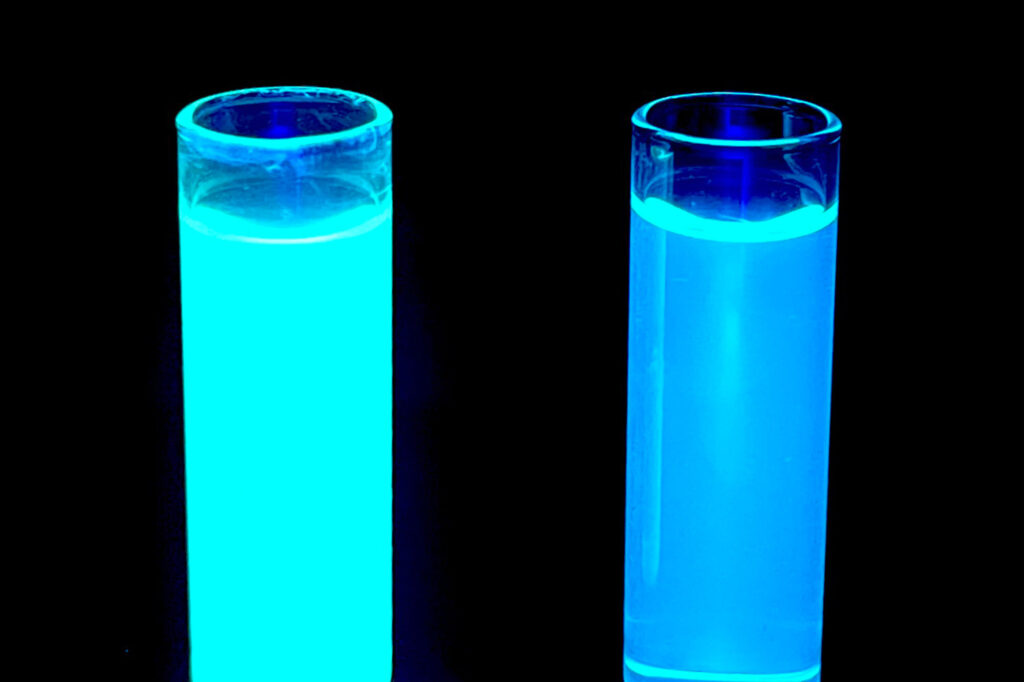Imagine tiny LEGO pieces that automatically snap together to form a strong, flat sheet. Then, scientists add special chemical “hooks” to these sheets to attach glowing molecules called fluorophores.
Associate Professor Gary Baker, Piyuni Ishtaweera, Ph.D., and their team have created these tiny, clay-based materials—called fluorescent polyionic nanoclays. They can be customized for many uses, including advancing energy and sensor technology, improving medical treatments and protecting the environment.
The work is published in the journal Chemistry of Materials.
Thousands of commercially available fluorophores are used today for medical imaging, disease detection and biomarker tagging, as well as in sensors for chemical analysis, forensic investigations and biosensing. They can also play a key role in industrial applications such as water quality monitoring.
Mizzou’s discovery, which is patent pending, stands out due to the remarkable adaptability of these nanoclays.
“They possess a high degree of functionality, meaning we can control how many and what kinds of fluorescent molecules are attached to the surfaces of these nanoclays,” said Baker, whose appointment is in the Department of Chemistry.
“This provides a versatile platform where the optical and physicochemical properties can be precisely tuned by selecting and attaching appropriate molecules. This ready-for-use customization is the hallmark of these materials, enabling a wide array of applications across different fields.”

Medical uses
Early tests suggest these materials are safe for medical use and can help doctors see inside the body more clearly. Scientists already use fluorophores to highlight cells and tissues under special microscopes, making tiny details visible. They also use these glowing molecules to track diseases, study how cells work and help diagnose health conditions.
“Normalized for volume, our fluorescently tagged clays exhibit 7,000 brightness units, matching the highest levels ever reported for a fluorescent material,” Baker said.
“The increased brightness makes these materials highly useful for sensitive optical detection methods. This translates to enhanced analytical signals and improved detection, unlocking new possibilities for advanced sensors and contrast agents in medical imaging.”

While fluorescence is a key focus of the current research, Baker said the team wants to explore other ways of customizing the nanoclays with other molecules, such as amino acids, antibodies, DNA aptamers and ligands for selective metal binding. This means these materials can be used for more than just glowing sensors and imaging. They could also help in capturing solar energy, delivering medicine, improving light-based technology and medical tests, tracking diseases and treating cancer.
Other co-authors are Luis Polo-Parada, an associate professor of medical pharmacology and physiology at Mizzou, and Nathaniel Larm at the United States Naval Academy. Ishtaweera is now at the U.S. Food and Drug Administration.


